At the heart of China lies the capital city of Beijing, which is famously known as its vibrant city blended with ancient traditions and modern cultures. Sharing its deep-rooted history, Beijing’s stunning architecture is well-known among travelers across the globe. From remarkable imperial palaces to peaceful gardens, Bejing is mesmerizing to explore. This guide will help you uncover the varied attractions to ensure that your visit to Beijing is remarkable and awe-inspiring. Be it indulging in historical facts, art lover, or in search of a new destination, Beijing is guaranteed to inspire and preserve.
What Are the Top Beijing Attractions You Shouldn’t Miss?
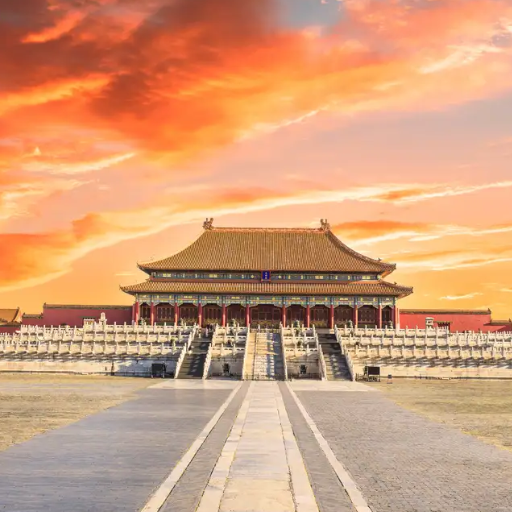
Exploring the Forbidden City: A Journey Through Chinese History
As China’s dynastic past unfolds, the Grand and Elegant China China’s Sophistication is certainly The Forbidden City, which not only is a UNESCO World Heritage Site, it stands as the most sophisticated and largest ancient imperial palace covering 180 acres of area filled with intricate carvings build from vibrant colored wood, symbolizing imperial authority. The elaborate carvings and vibrant colors use the palace’s traditional wooden construction, where each one of the 980 buildings built upon it is meticulously arranged to showcase the effortless architecture China has always intended to express. Along with the masterpieces, the radiating imperial symbols showcase Chinese key elegance. The layouts are done along a North-South axis, creating a vast kingdom that extraordinarily obeys Chinese Feng Shui.
This astounding construction occurred during the Ming Dynasty between the years 1406 to 1420. The Palace is famous for being home to 24 emperors, making it historically significant till the start of the Qing Dynasty. Deep in the region’s center, The Hall of Supreme Harmony acts as the Intricate showcase, and The Imperial Garden, standing beside it, decorates supreme China’s ability to beautiful nature.
Exploring the Forbidden Palace strongly connects you to unveiling the intricacy and craftsmanship of empires in China. If you’re attracted to its scale, then serve it as the centerpiece on your decorating stand while on your Beijing trip.
Visiting the Great Wall of China: Which Sections Are Best?
Deciding which part of the Great Wall of China to visit depends on the personal interests, fitness level, and nature of the experience sought by the traveler. Here are some notable works, their particular functionalities, and technical information:
1. Badaling
Highlights: It is, without doubt, the best example of a tourist section, being the most visited and best-preserved part of the wall. It’s great for first-timers.
Accessibility: The area has been completely restored and provided with wide pedestrian ways and handrails, which make it easy for tourists to navigate. There are also the usual facilities.
Distance from Beijing: It is roughly 43 miles or about 70 kilometers to the wall, taking onward of one to one and half hours by car.
Ideal For: Casual travelers and families enjoying leisure trips.
2. Mutianyu
Highlights: Famous for its views and photographed restored architecture, it is less crowded than Badaling.
Accessibility: A cable car ride offers a novel way to travel up, and walking down involves riding a toboggan.
Distance from Beijing: Approximately 135 km or 45 miles away, it takes an hour and a half to reach by car.
Ideal For: Keeps the two oldest ages beautiful places in the Great Arc.
3. Jinshanling
Highlights: Some of the Wild Great Wall. A mix of seen and wild, overgrown walkable slices and other restorable forms.
Accessibility: Hikes are moderately challenging, but some sections have rougher ground.
Distance from Beijing: Two to two and half hours, around Beltway of the Great, Washington Frankfort.
Ideal For: There are a lot of experienced hikers or those who admire quietness in authentic emotions.
4. Simatai
Highlights: The only section that is open simultaneously immediately around the block has a view to add all perspectives.
Accessibility: Different cable ranges are generally steeper, which increases the other separately.
Distance from Beijing: Approximately 74 miles (120 km), about 2 hours by car.
Ideal For: Visitors keen on night adventures and excursions exploring.
5. Jiankou
Highlights: Famous for its steep cliffs, this unrestored section is a world wonder in itself.
Accessibility: Dangerous unmet trails with steep and crumbling paths.Intended only for mountain climbers.
Distance from Beijing: Roughly 60 miles (97 km), about 2–2.5 hours by car.
Ideal For: Seasoned nature walkers and camera lovers who want to test their skills.
For every taste and interest, there are many parts of the Great Wall to visit. If you want to know more about China’s history, explore where experts can guide you. There are no limits to the imagination when choosing the idea for a trip. Depending on what you set your sights on, the right section will provide many opportunities that will decisively make your visit a treasured moment to take home from China.
Discover the Summer Palace: A Lakeside Retreat
Located in Beijing, the Summer Palace is famous for its exceptional lakes, gardens, and palaces and is a UNESCO World Heritage Site. Here are some details that would help you:
Location: About 30 minutes by vehicle or public transport from downtown Beijing, situated around 15 km to the north of the Summer Palace.
Size: Has an area of approximately 300 hectares or 742 acres, containing Kunming Lake and Longevity Hill.
Highlights: Classical Chinese structures and their imperial culture can be observed through The Long Corridor, Marble Boat, and Tower of Buddhist Incense.
Ideal for: Anyone looking for recreational activities that connect them with history, nature, and an escape from the busy parts of Beijing.
Best Time to Visit: The weather and scenery are good in the spring season between April and May and in autumn, September and October.
In the Summer Palace, you will experience China’s rich heritage blended with natural beauty and history.
How to Plan a Perfect Day of Beijing Sightseeing?
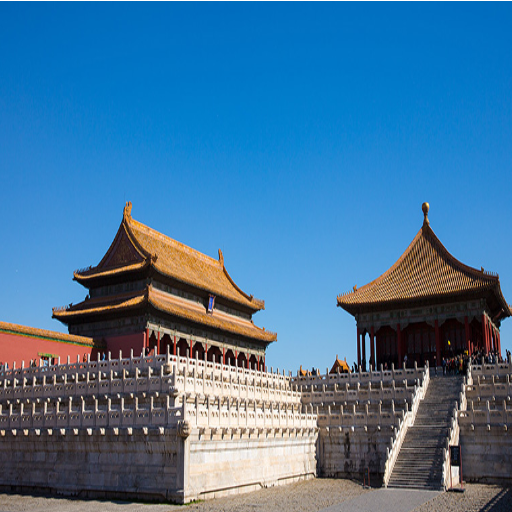
Start Your Day at Tiananmen Square: The Heart of Beijing
As one of the largest public squares worldwide, Tiananmen Square reflects the modern history of China and its political and socio-economic importance. To enjoy yourself thoroughly, visit early in the morning to appreciate the historical landmarks without large crowds. Other striking sites encompass the Expression of The People’s Heroes, the Portrait Tower of Mao Zedong (The Gate of Heavenly Peace), and the Chairman Mao Memorial Hall. Their flag-raising ceremony is done precisely at sunrise and incorporates an elaborate military skill set and robust displays of patriotism. Working Hours: square – around the clock; territories, for example, of Chairman Mao Memorial Hall – 8.00 AM till noon (change a little bit by season).
Necessary Restrictions: be at hand with an identification card or a passport, allowing security checks to occur.
Ideal time for Pausing is the calm daybreak period early in the morning, when fewer people will be present for the raising of the flag.
Transport Facilities: The Metro, li, first or second street line, and either Eastern or Western Tiananmen Station are nearby. Bus stops are also handy.
Stroll around the four corners, inside the square, and witness the grandiose landmarks that capture stills that form a monument before proceeding on an expedition to the sight-defined locations you have planned.
Morning Stroll Through the Temple of Heaven
What to See: The Temple of Heaven comprises a broad complex encompassing the Hall of Prayer for Good Harvests, the Circular Mound Altar, and the Imperial Vault of Heaven. Every construction blends Ming and Qing architectural creativity and has profound meaning intricately embedded in its design.
Technical Parameters: The Hall of Prayer for Good Harvests is 38 meters tall and 36 meters in diameter. It is made completely of wood and does not have a single nail, demonstrating the engineering skill of an earlier era.
Best Time to Visit: Between 7 AM and 9 AM in the early hours is the most optimal time to capture the atmosphere while seeing locals practicing tai chi or morning exercises that add more cultural value to your visit.
Accessibility: Metro Line 5 accommodates passengers by stopping at Tiantandongmen Station (A Exit), which goes directly to the park’s Eastern Gate. Buses like No. 6, 34, or 35 also facilitate access.
Tips: The walking shoes worn should be comfortable, as the temples are far apart, and a lot of water should be taken to keep hydrated. To best capture the extensive craftsmanship and peaceful environment around you, take as many pictures as you like.
Afternoon at the National Museum of China
Summary: With its long history, the country’s rich culture is deeply reflected in every piece of art, showcased by the museum’s ancient artifacts and contemporary art exhibits. The artifacts above are further categorized into an Ancient China Gallery and modern Chinese historical displays.
Technical Parameters: The Modern China Museum has approximately 1.4 million items on display, such as jade, bronze, ceramics, and paintings, covering an area of 200,000 square meters. Foreign tourists can purchase audio guides in other languages to appreciate the museum fully.
Accessibility: The site is along Chang’an Avenue, which is just close to Tian’anmen East Station (Metro Line 1). For us, there are elevators and wheelchair services, which help move those who physically struggle.
Tips: While entrance is free of charge, an ID or passport is needed for admission. It is advisable not to arrive late to ensure there aren’t too many people and be ready to spend 2-3 hours walking around. Flash photography is forbidden to protect fragile pieces of history, but photography is allowed for the majority of the rooms.
Why are Beijing’s Hutongs a Must-Visit for Tourists?
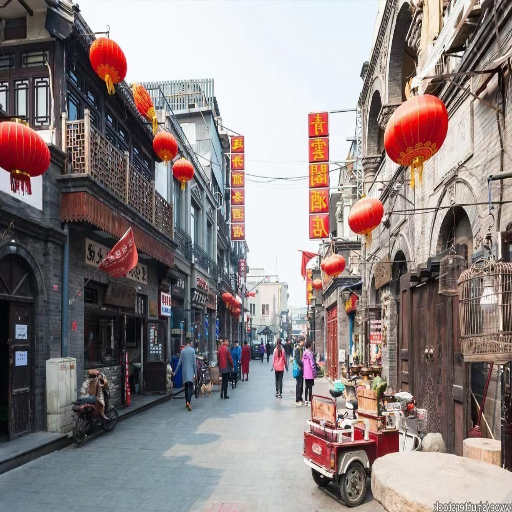
Uncover the Charm of Old Beijing
The intricate lanes that once comprised Old Beijing are exceptionally well preserved. The siheyuan that is interspersed along the narrow hutongs provides insightful, authentic historical context about Hutongs and Courtyard Houses in Beijing, China.
Cultural Significance: Siheyuan houses possess deep-rooted historical influences from China’s wider communal and imperial legacy, offering a blend of architecture that showcases Beijing’s rich past.
Architectural Details: The view from above a Siheyuan, predominantly with high walls, reminds any viewer of the Chinese flag and leaves any viewer in awe because this house symbolizes harmony, which is a key element in Chinese culture.
Yandai Xiejie is a commercial street famous for its artistic decor and traditional Beijing cuisine.
Nanluoguxiang – A unique, quaint street with bustling, trendy cafes, stores, and art galleries.
Beijing’s glory can only be relished completely with immersive rickshaw tours, which showcase extraordinary scenery and Old Beijing, filled with vibrant culture.
Experience Local Life in a Traditional Courtyard
Living in a classic Beijing courtyard known as siheyuan allows one to view the history, culture, and even the architecture of the people in the area. Several centuries-old houses are usually built as square-shaped courtyards with single-story rooms encompassing them from all four sides. They are a symbol of balance and proportion. Their arrangement promotes strong family cohesiveness because multi-generational families usually reside in these small, intimate spaces. When you visit, consider classic features such as elegantly carved gates, gray brick walls, and finely shaped windows, which beautifully illustrate craftsmanship.
To maximize their appreciation, visitors can partake in Chinese cooking lessons, serve tea, or even participate in a calligraphy course, all held in the courtyards. Many of these spaces have been specially preserved and are now boutique guesthouses where visitors can use modern facilities while being in a historically accurate area. The fusion enables tourists to appreciate the essence of Old Beijing in a significant and fascinating manner.
What Are the Best Beijing Tourist Attractions for Culture Lovers?
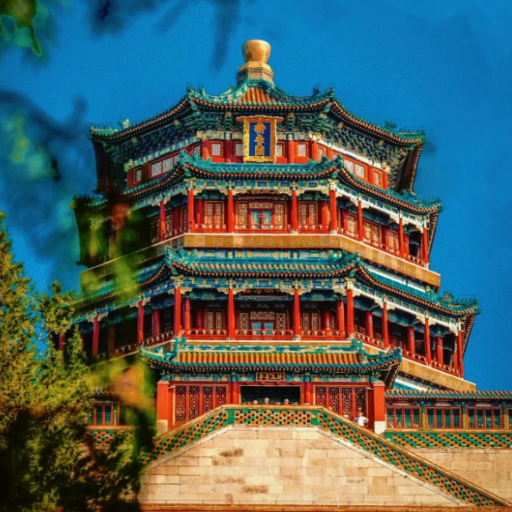
Uncovering Art in Beijing’s Galleries
When it came to art exploration in Beijing, I was amazed by the city’s blend of traditional and modern works of art. One of my favorite places was the 798 Art District, an old industrial complex with modern galleries, studios, and street art. It is a lively place full of art where contemporary artists break new ground, and every single place has a story to tell.
As for traditional Chinese art, the National Art Museum of China is well-known for its collection of classical paintings, calligraphy, and folk art. Coming here felt like dipping into the heart of China’s artistic heritage.
Travel Time: You must spend at least half a day at each location to enjoy the exhibits and environment.
Accessibility: These two locations can be reached easily by public transportation, and they have many signs and services for foreigners visiting the country.
Seasonal Influence: Spring and Fall are seasons when 798 Art District is full of lively energy, so the weather can affect your outdoor activities.
Cultural Sensitivity: Always consider and appreciate the gallery rules about taking photographs or touching the art pieces displayed.
These things built up my understanding of Beijing’s diverse art scene and put the city’s dynamic and rich culture into context.
Exploring The Lama Temple: A Buddhist Sanctuary
Visiting the Lama Temple was emotionally refreshing, as it allowed me to appreciate the spirituality and architecture associated with Beijing. A Tibetan Buddhist Temple is one of the best examples of spectacular artistry in the world, with its numerous Sculptures, Mural Paintings, and other forms of Art. The question that comes to mind frequently is whether the Lama Temple is worth visiting. I would recommend it to people who admire Buddhist culture or appreciate historical craftsmanship.
Concerning accessibility issues, the Lama Temple is located next to a metro station called Yonghegong Lama Temple, which services the site directly. On my visit there, entry fees with Zion were about $10, which helps preserve it. Showing some cultural sensitivity is very important. In this case, I recommend you dress suitably and not talk too loudly while in the temple. It is also essential to find out how rules regarding photos differ from one part of the temple to another, as they may do.
Some tourists are interested in the more practical side. I believe the time of day and the famous Beijing traffic are quite important. You should try to go early in the morning or on a weekday to avoid the rush. This way, you can reflect on your time, in case it is not so common in our day, and effort is needed to appreciate the calm atmosphere.
The integration of Tibetan and Han Chinese architectural styles, alongside the religious atmosphere, makes the peaceful Lama Temple an oasis amid the city’s commotion.
A National Museum Visit: A Stroll Through Chinese History
During my visit to the National Museum, its exhibits alone were sufficient to place me deep in the folds of history that this nation had to offer. The museum has well over a million items ranging from ancient artifacts and revolution relics to numerous artistic pieces that depict the nation’s history. The Shang and Zhou dynasty bronze ware galleries stood out to me the most as they provided a glimpse into ancient societies’ craftsmanship and values.
To make my visit pleasant and effective, I allocated sections based on personal interest and made sure to get ready in advance so that I would not be a part of the late rush. The museum permits pictures to be taken in certain sections, although no flash was used on my end to help keep the artifacts intact. The temperature and humidity in the air-conditioned galleries were kept constant, which added to the ease of the visitors. It was free of charge for anyone wishing to enter, although some form of identification was required, which I found helpful and sensible.
Altogether, the experience offered to me was incredible. I felt awed by Mr. Wu’s vast collection of relics, knowing that I was witnessing the history of China while also nurturing my understanding of the museum’s profound significance.
Where to Experience Authentic Beijing Cuisine?
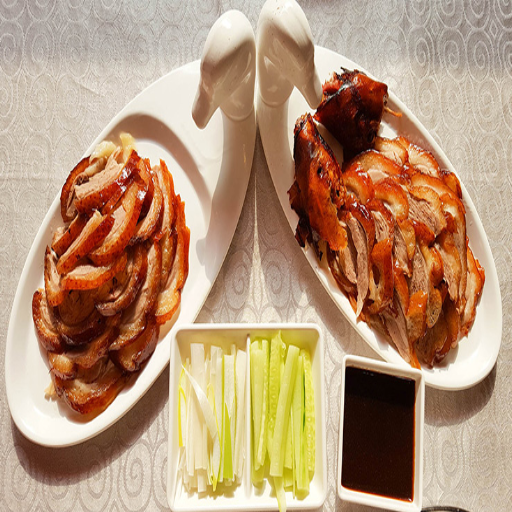
Savoring the Iconic Peking Duck
Sampling local dishes is essential in Beijing, and trying Peking duck is a must. I had the honor of tasting this delicacy in one of the recognized restaurants in the city that utilizes traditional methods and is painstakingly meticulous with its processes. The duck was roasted over an open flame until the skin was crispy and golden brown while the meat remained juicy and soft. With each bite, accompanied by thin pancakes, sweet bean sauce, and refreshing cucumber slices, I had a taste explosion due to differing textures and flavors.
In a more critical sense, too much detail was missed that better visualized the synchronicity of basic steps that, alongside careful temperature control of 200°C to 240°C, forced the skin to separate but not burn the meat inside. The timing had to be accurate as well, needing about 65 to 70 minutes for all steps to be completed and everything, and the ducks themselves became a variable too inspiringly described after quantifying them with words like ideal, a euphemism for 6 pounds, so to achieve the finish I had to possess. The level of expertise put into it and the authenticity that followed made the dining experience pleasant and unforgettable.
Dining at Local Cafes in Beijing
The coffee-table conversation in cafes in Beijing is unique and interesting. The blend of cozy atmosphere alongside quintessential Chinese interior design and modern flair makes the lore around each cafe charming. Several cafes take pride in their handcrafted coffee beverages; I saw in a few cafes that the coffee extraction process is done with precise temperature control—between 85° Celsius and 92° Celsius—to avoid bitterness and lock in flavor. It was also evident that milk steaming performed for lattes or cappuccinos was done at 55° Celsius to 65° Celsius; the silky froth at this temperature matched the bold notes of the coffee perfectly.
Alterations in these parameters will drastically change the taste, bothering the cuisine with burnt flavor or under-dominant flavor if it’s too high or too low. Similarly, the incorrect temperature would produce milk froth bubbles or denseness, disrupting the delicate balance. Aside from the cafes’ direct commitment to quality, their attention to technical details made me appreciate the vibrant coffee culture in Beijing even more.
Frequently Asked Questions (FAQs)
Q: What are the must-see attractions in Beijing for a first-time visitor?
A: Make it a point to receive The Great Wall of China at Mutianyu and Badaling, The Forbidden City, and the Temple of Heaven for the first time in Beijing, along with their unfathomable beauty and grandeur. The Temple of Heaven is a stunning Chinese garden, and it is known as one of the greatest wonders of Beijing. The Forbidden City is where emperors resided in their expansive palace complex during the majestic Ming and Qing Dynasty, while the Great Wall is an unparalleled sight to behold.
Q: What are the various ways to have a breathtaking aerial view of Beijing?
A: Jingshan Park, located in the CCTV Tower, is another superb option for those keen to see beauty from a diverse perspective. While the awe-inspiring grandeur of the Forbidden City can be enjoyed from here, the entirety of Beijing also adds to its beauty.
Q: What do you think can be understood from a trip to the Olympic venues in Beijing in 2008?
A: The Bird’s Nest and Water Cube, which served as the Olympic venues in Beijing, are stunning examples of modern architectural achievements and China’s hosting glory during the Olympic Games. These are some of the favorite places for tourists as they capture the blend of modern and traditional Beijing.
Q: Which is the most recommended attraction near Beijing?
A: Labeled as a masterpiece, the Summer Palace, located on the outskirts of Beijing, is famous for its lovely pavilions built along a perfectly designed Chinese garden. Also approachable are the Ming Tombs alongside Great Wall sections such as Mutianyu and Badaling, which all possess great value in China’s history.
Q: What options do I have for seeing the Buddhist temple architecture in Beijing?
A: The architectural values of some of the Buddhist temples, like Lama Temple, within the boundaries of Beijing are exceptional. You can always come to these temples to witness and learn more about the Buddhist religion through their craftsmanship.
Q: What should I know about Chairman Mao’s Lecture Influence in Beijing?
A: Regarding Beijing’s history and culture, Chairman Mao, the head of state in the People’s Republic of China, remains an important figure. As such, some of the tourist attractions of Beijing, like Mao Zedong’s mausoleum and Tiananmen Square, which is among the best squares around the globe, serve as his monuments.
Q: What is the best way to prepare an all-inclusive travel guide to Beijing?
A: When preparing a complete travel guide to Beijing, I suggest you start with the history and cultural aspects, like the Forbidden City and the Temple of Heaven. The guide also needs to cover parts of the Great Wall and other contemporary sites, such as the 2008 Olympic construction sites. Markets and hutongs are good places to visit to spice up your trip to Beijing.